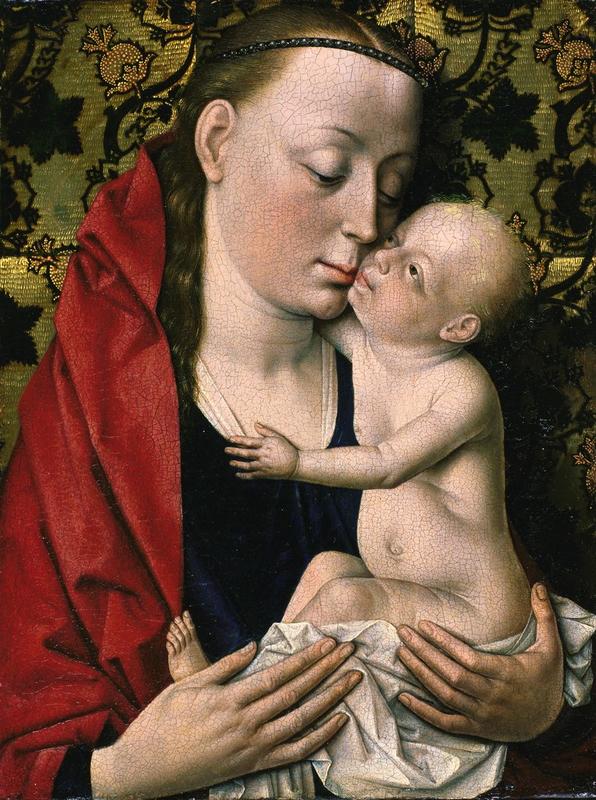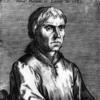More about Virgin and Child

Contributor
Virgin and Child: yet another stiff portrait from the master of disproportion.
When Jan van Eyck does the funky proportions, we praise him. When Bouts attempts the same shtick, he’s criticized. Dieric just couldn’t step out from van Eyck’s shadow— can’t two Flemish masters share the stage for once?
Bouts drew the short straw in life as soon as he was born in the 1400s. This delightful century brought Europe the French serial killer Gilles de Rais, the execution of Joan of Arc, and the continued terror of the bubonic plague. Most influential to Bouts’ artwork, however, was the strong religious sentiment in his native Netherlands. This environment is the reason for the questionable anatomy in Bouts’ paintings. Rigid limbs and bulbous heads aside, the true mystery here is why baby Jesus looks like a scheming old gentleman.
We know cute babies aren’t beyond the master painters. After all, the bundle of joy in Mary Cassat’s The Boating Party looks like your typical neighborhood infant— cute, swaddled in layers of baby clothes, and about ready to start howling. Da Vinci’s Virgin of the Rocks showcases an angelic little Messiah, complete with the chubby cheeks and cherubic aura we’d expect from a tot of his age. Unfortunately, the young Christ of Bouts’ slightly earlier painting is more malevolent than angelic and more senior citizen than newborn. Was this sinister interpretation of art’s favorite infant purposeful?
Before the Renaissance, painters were intentionally depicting baby Jesus as a crafty old man in an infant’s body. As unsavory as this tradition sounds, the stylistic choice came from the image of Jesus as a complete, unchanging being. Before the Renaissance, the understanding of children as extraordinarily innocent hadn’t yet taken hold. Instead, the “elderly-baby” tradition spread from paintings of the Christ child to paintings of most every tot. After all, why shouldn’t a two year old look like he’s thinking about his taxes and a rather hefty electric bill?
With the Renaissance came an increase in commissions, and customers wanted family portraits that didn’t make their progeny look like oddly aged babies. The changing times didn’t affect Dieric Bouts’ son, however. For better or worse, Aelbrecht Bouts carried on the ugly baby tradition with some horrifying interpretations of his own.
Sources
- “15th Century.” Wikipedia. July 5, 2017. Accessed July 6, 2017. https://en.wikipedia.org/wiki/15th_century.
- “Aelbrecht Bouts.” Wikipedia. June 20, 2017. Accessed July 6, 2017. https://en.wikipedia.org/wiki/Aelbrecht_Bouts.
- “Black Death.” Wikipedia. July 4, 2017. Accessed July 6, 2017. https://en.wikipedia.org/wiki/Black_Death.
- “Dieric Bouts.” Britannica. March 27, 2012. Accessed July 6, 2017. https://www.britannica.com/biography/Dieric-Bouts.
- Edwards, Phil. “Why Babies in Medieval Paintings Look Like Ugly Old Men.” Vox. July 28, 2015. Accessed July 6, 2017. https://www.vox.com/2015/7/8/8908825/ugly-medieval-babies.
- “Gilles de Rais.” Wikipedia. June 26, 2017. Accessed July 6, 2017. https://en.wikipedia.org/wiki/Gilles_de_Rais.











